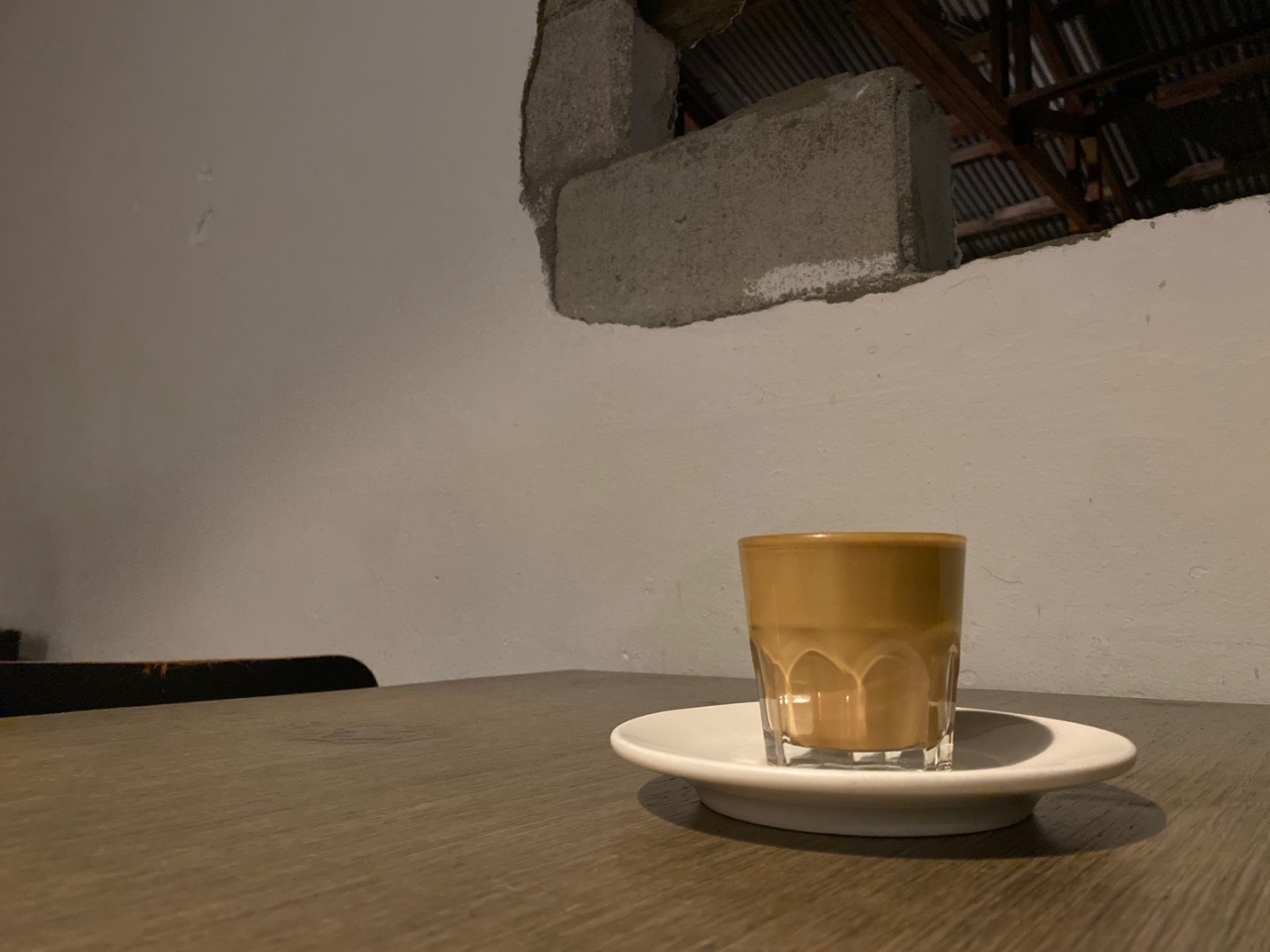 |
A glass of a coffee drink is photographed in an industrial-style cafe in Seoul. (Yim Hyun-su/The Korea Herald) |
On a weekday evening, one cafe in western Seoul is about to close for the day while customers are still chatting away and enjoying their coffee.
Repurposed from a shoe factory, this cafe is one of several trendy spots across the city that attract coffee drinkers and cafe enthusiasts alike, as numerous Instagram posts tagging the location show.
“Industrial interior designs display the appeal of raw materials. Since it can give off a vintage or clean feel depending on the finish, demand is expected to continue,” said Park Seung-hyun, a cafe photographer with over 80,000 followers on Instagram under the account @piao.sho.
Dubbed “Cafe Pilgrim,” Park travels around the country to introduce cafes on social media through his photos and reviews.
“Large-scale cafes popping up in the suburbs of Seoul and elsewhere and those with a clear and strong concept are among the recent trends. Cool espresso bars that offer a short but energizing break are also spreading,” he explained when asked about the latest cafe trends in Korea.
While factories-turned-cafes have received praise for urban regeneration efforts, some may have gone too far in an attempt to stand out among the pack.
“This is the ultimate construction site cafe I saw today. It almost makes me think there was not enough budget to cover the construction cost,” one viral tweet reads.
“And on top of everything else, it is a ‘no kids zone’ while dogs are allowed to enter.”
The tweet had been shared more than 16,000 times since it was uploaded late last month alongside pictures of the cafe. The cafe’s interior design was branded as “going too far” by many users, drawing a comparison between the venue and construction sites.
The cafe, located on Jeju Island, acknowledges there is an issue of mobility at the venue for children.
“The floor is not flat and is risky for children to visit. After careful thought, we decided to not accept children aged below 12,” the cafe in question said in a statement.
Industrial-style cafes tend to use a lesser amount of finishing material, making them appear more spacious and less boring while lending a clear sense of dimension. But the flip side of the coin is that raw construction materials could leave a “messy” impression for some.
“There are many places with industrial interior designs that are both refined and rough on the edges. I think people can choose based on their taste,” Park said.
Ahn Hyeong-Joon, a former professor of architecture at Konkuk University, said industrial interior design has been trendy for a few years now, especially among venues catering to young people, like cafes for example.
“Ranging from exposed concrete, pipes and bricks to steel, (industrial interior designs) are quite experimental and show the structure of a building in a very honest way.”
The style itself is nothing new, Ahn acknowledges, citing as an example Kyungdong Presbyterian Church, which was built in 1981 by prominent South Korean architect Kim Swoo-geun.
The church is famous for its main tower in the shape of praying hands and walls with an exposed concrete finish.
“Just like a retro fashion trend, I believe there is growing demand,” Ahn said.
By Yim Hyun-su (
hyunsu@heraldcorp.com)








![[Today’s K-pop] Blackpink’s Jennie, Lisa invited to Coachella as solo acts](http://res.heraldm.com/phpwas/restmb_idxmake.php?idx=644&simg=/content/image/2024/11/21/20241121050099_0.jpg)